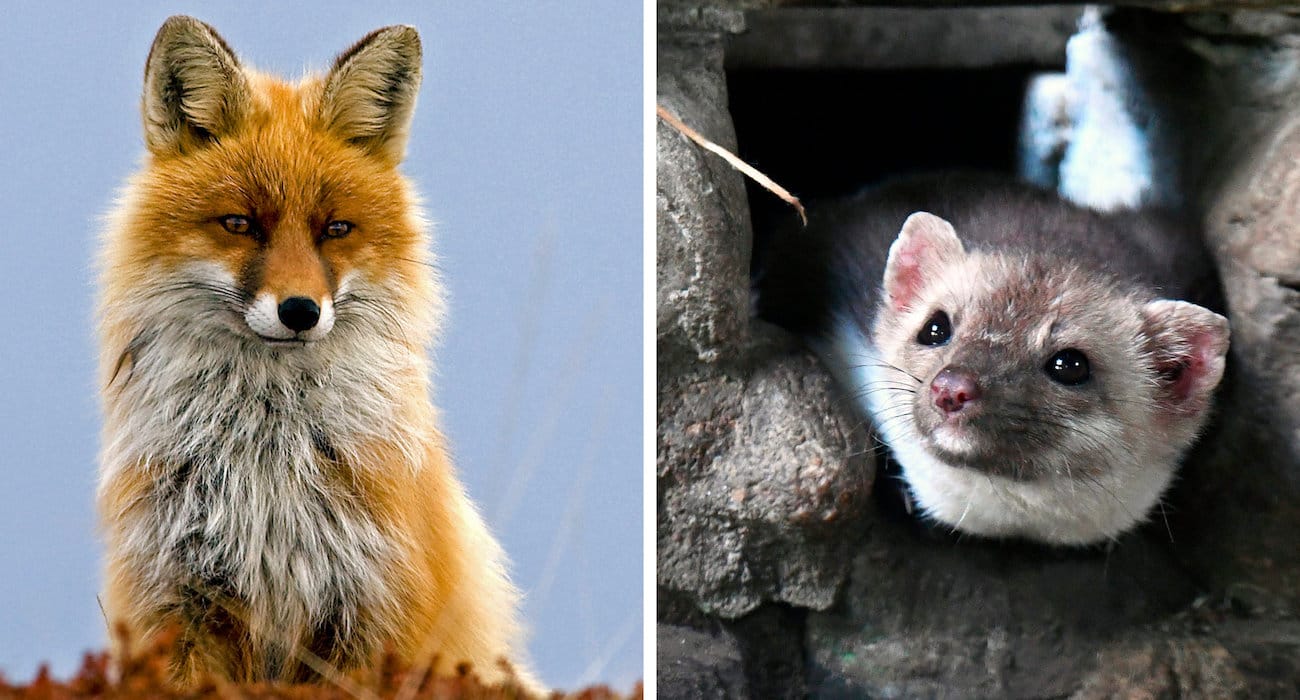Lyme Disease’s Worst Enemy? It Might Be Foxes

Outbreaks of epidemic diseases and parasites are growing wildlife problems, especially when these are passed to humans. Wildlife managers spend as much time on these problems as on any other aspect of wildlife husbandry. Predators control these diseases, which is another reason that predator removals are such a huge mistake.
NOTE: this article initially appeared on NYTimes.com on August 2, 2018. It was written by Amy Harmon
It is August, the month when a new generation of black-legged ticks that transmit Lyme and other diseases are hatching. On forest floors, suburban estates and urban parks, they are looking for their first blood meal.
And very often, in the large swaths of North America and Europe where tick-borne disease is on the rise, they are feeding on the ubiquitous white-footed mice and other small mammals notorious for harboring pathogens that sicken humans.
But it doesn’t have to be that way. A new study suggests that the rise in tick-borne disease may be tied to a dearth of traditional mouse predators, whose presence might otherwise send mice scurrying into their burrows. If mice were scarcer, larval ticks, which are always born uninfected, might feed on other mammals and bird species that do not carry germs harmful to humans. Or they could simply fail to find that first meal. Ticks need three meals to reproduce; humans are at risk of contracting diseases only from ticks that have previously fed on infected hosts.
For the study, Tim R. Hofmeester, then a graduate student at Wageningen University in the Netherlands and the lead researcher of the study, placed cameras in 20 plots across the Dutch countryside to measure the activity of foxes and stone martens, key predators of mice. Some were in protected areas, others were in places where foxes are heavily hunted.
Over two years, he also trapped hundreds of mice — and voles, another small mammal — in the same plots, counted how many ticks were on them, and tested the ticks for infection with Lyme and two other disease-causing bacteria. To capture additional ticks, he dragged a blanket across the ground.
In the plots where predator activity was higher, he found only 10 to 20 percent as many newly hatched ticks on the mice. Thus, there would be fewer ticks to pass along pathogens to next generation of mice. In the study, the density of infected “nymphs,” as the adolescent ticks are called, was at 15 percent of levels in areas where foxes and stone martens were less active.
“The predators appear to break the cycle of infection,’’ said Dr. Hofmeester, who earned his Ph.D. after the study.
Despite stuffing his pant legs into his socks and using permethrin, a tick repellent, he said he removed more than 100 ticks from his own body.
Interestingly, the predator activity in Dr. Hofmeester’s plots did not decrease the density of the mouse population itself, as some ecologists had theorized it might. Instead, the lower rates of infected ticks, Dr. Hofmeester suggested in the paper, published in Proceedings of the Royal Society B, may be the result of small mammals curtailing their own movement when predators are around.
“This is the first paper to empirically show that predators are good for your health with respect to tick-borne pathogens,” said Dr. Taal Levi, an ecologist at Oregon State University who was not involved in the study. “We’ve had the theory but this kind of field work is really hard and takes years.” He also said of Dr. Hofmeester, “Wow, I have to send him an email.”
Habitat fragmentation, hunting and the removal of larger predators like cougars may all figure into the dwindling of small mammal predators like foxes, weasels, fishers and martens, Dr. Levi said. If the study’s results are borne out by more research, public health officials might be moved to try interventions like protecting foxes or factoring the habitat needs of particular predators into land-use decisions to foster their population size. Nothing else — like culling deer or spraying lawns with tick-killing pesticide — has worked so far to stem the incidence of tick-borne disease, which is spreading in the Midwestern United States, in parts of Canada and at higher altitudes across Europe.
“The takeaway is, we shouldn’t underestimate the role predators can play in reducing Lyme disease risk,” said Richard S. Ostfeld, a senior scientist at the Cary Institute of Ecosystem Studies, who originally speculated on the importance of small mammal predators in a 2004 paper. “Let’s not discount these cryptic interactions that we don’t see very often unless we put camera traps in the woods.”
Correction: August 2, 2017
Because of an editing error, an earlier version of this article incorrectly described the number of newly hatched ticks found on mice in areas of a study where predator activity was higher. It was 10 to 20 percent, not 5 to 10 percent. The density of infected adolescent ticks in areas where foxes and stone martens were active was also incorrectly described. It was 15 percent, not 6 percent, of levels in areas where foxes and stone martens were less active.
Follow Amy Harmon on Twitter: @amy_harmon
Like the Science Times page on Facebook. | Sign up for the Science Times newsletter.
A version of this article appears in print on Aug. 7, 2017
